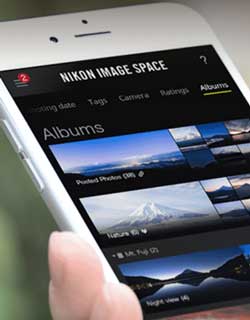SnapBridge, the first attempt by a camera company to deliver an ‘always on’ connection between cameras and smartphone (if we forget the Samsung NX1), could prove to be the missing link between photography and the online world.
 SnapBridge was announced in January along with the Nikon D500, but probably didn’t get the attention it deserved at the time. The photo industry is a Tower of Babble when it comes to dumb acronyms, jargon and odd sub-brands for proprietary technologies. (One product announced last week had both eBAND – ‘extended bandwidth and angular-dependency’ and BBAR – ‘broad-band anti-reflection’.) So when something genuinely innovative comes along, it can easily get lost in the noise.
SnapBridge was announced in January along with the Nikon D500, but probably didn’t get the attention it deserved at the time. The photo industry is a Tower of Babble when it comes to dumb acronyms, jargon and odd sub-brands for proprietary technologies. (One product announced last week had both eBAND – ‘extended bandwidth and angular-dependency’ and BBAR – ‘broad-band anti-reflection’.) So when something genuinely innovative comes along, it can easily get lost in the noise.
An permanent link between camera and smartphone was first introduced by Samsung, which had its NX1 in constant contact with (Samsung) phones and tablets. Nikon plans to feature SnapBridge on most of its new camera releases in 2016. (It’s probably not something that a professional photographer would be screaming out for.) So the new Coolpix DL premium compacts and the Coolpix B700, B500, A900 and A300, released after the D500 enthusiast DSLR, also come with SnapBridge.
As Nikon’s James Murray noted in a recent discussion with PhotoCounter, innovations like these help make this year’s more expensive (due to exchange rate changes) upgraded new models more acceptable to potential buyers.
While WiFi connectivity is all very well, it requires a conscious effort on the part of the photographer to get images from the camera to the smartphone or device. Every time. With SnapBridge, once the initial connection between a Nikon camera and a device has been made – just once, unlike Wi-Fi – new image files will be auto-uploaded.
Up to five smart devices can be paired with the camera. Photographers can toggle between the option to transfer images automatically during or after shooting in their camera menu. The camera switches from Bluetooth low energy to Bluetooth to transfer the data – even when the camera is turned off! Images are transferred to smart devices as 2-megapixel (Full HD) images in JPEG format.
Information can be embedded into the image using the SnapBridge application. Users can select up to two types of information, from copyright and image information, to additional texts and logos, to be placed in the image for personal image protection and identification.
The SnapBridge application can also be used for remote shooting: it allows users to confirm through-the-lens images on a smart device screen in real time before releasing the shutter via the application.
Additionally on Nikon Coolpix cameras, zoom control and the camera’s self-timer can also be controlled via a compatible smartphone.
Nikon will also use the SnapBridge app to notify Nikon owners when new firmware is available for the camera that the smartphone is connected to.
 The SnapBridge application also takes the location and time information of the user’s smart device and automatically synchronises the camera’s to it, removing the need to manually change dates and location information of the camera when travelling abroad.
The SnapBridge application also takes the location and time information of the user’s smart device and automatically synchronises the camera’s to it, removing the need to manually change dates and location information of the camera when travelling abroad.
Followig the introduction of SnapBridge, Nikon has also re-launched its online picture sharing and storing service – formerly mypicturetown.com – as Nikon Image Space, opening availability to non-Nikon types but offering registered Nikon customers a free 20GB of storage space.
Unlike Canon’s Irista image storage service there are no paid options as yet. Registered Nikon users get 20GB and the registered rest of the world gets 2GB of free space.
Within Nikon Image Space there are View, Report, and Organise modes: View mode – well that would be looking at photos – at up to full screen. The Report function can be used to check the number of times an image has been viewed, the number of ‘Wows’ it has received, a user’s ‘photographic tendencies’ (aperture selection, etc), and acquire ‘badges’. Various ‘badges’ can be acquired based on the ‘photographic tendencies’ of uploaded photos. Photos can be organised on a number of criteria: When taken, when uploaded, etc.
At some stage in the indeterminate future, Nikon intends to enable automatic uploads of an unlimited number of 2-megapixel images to Nikon Image Space from SnapBridge.





Be First to Comment